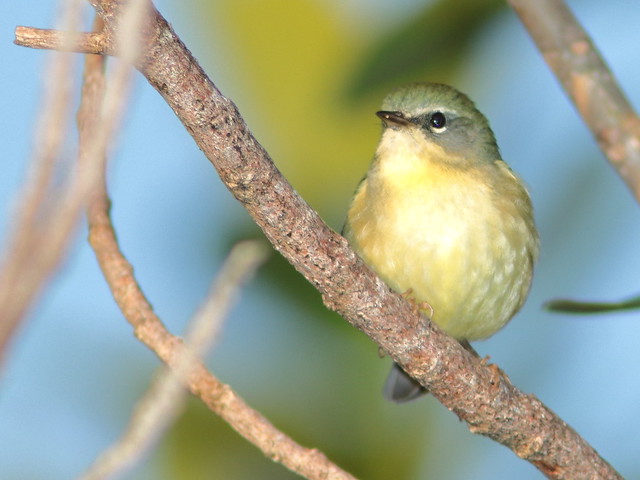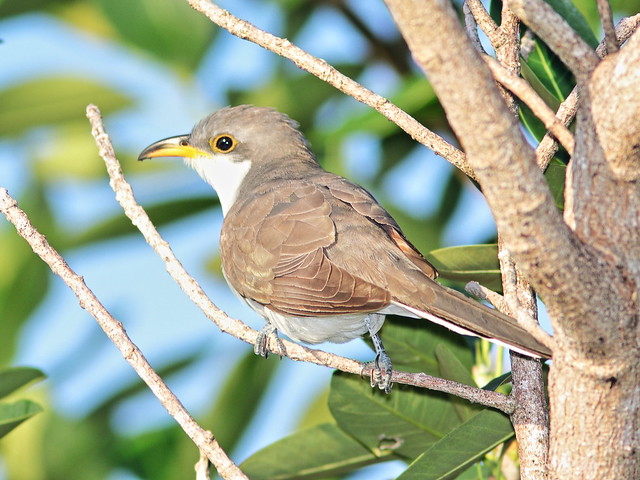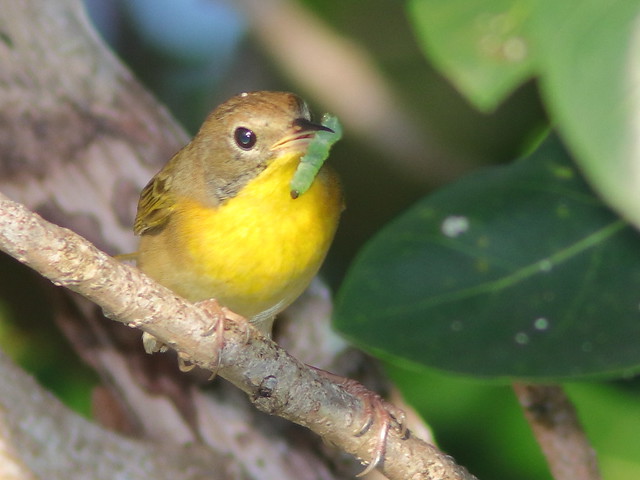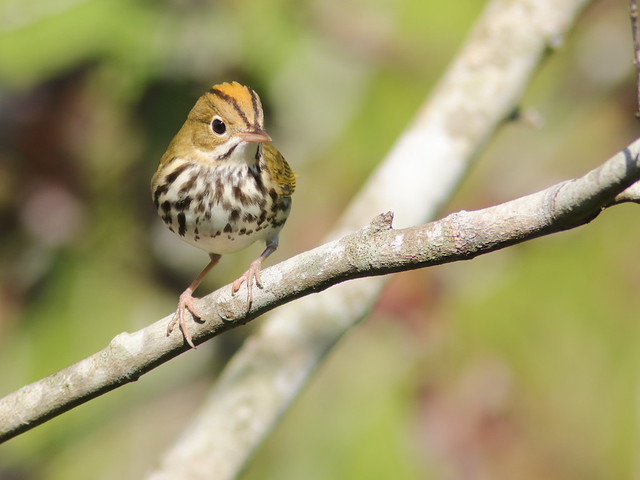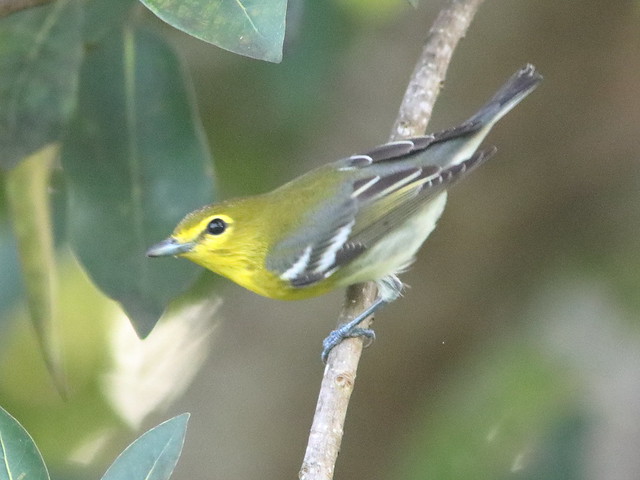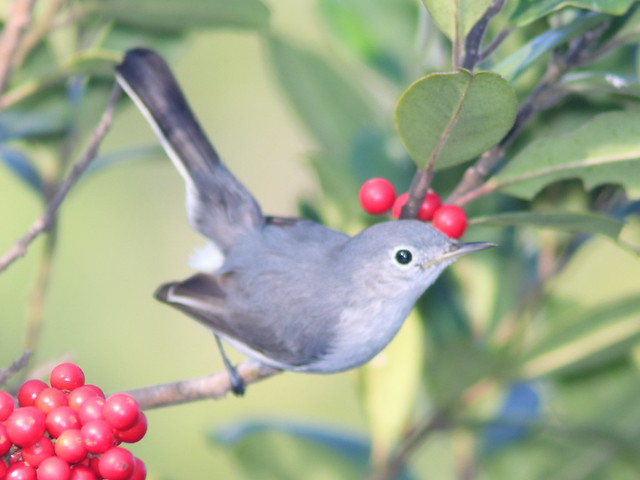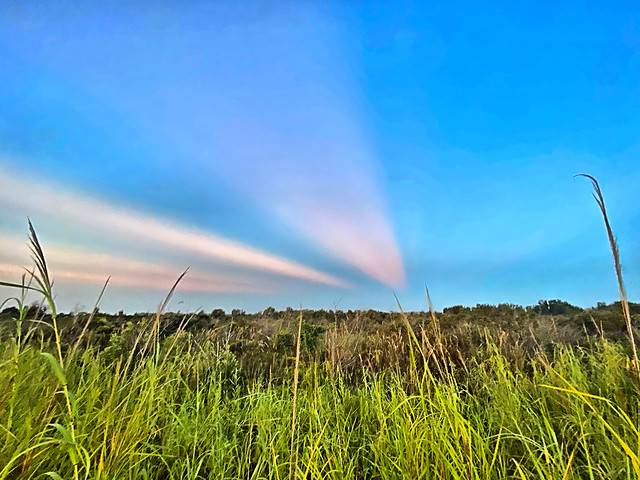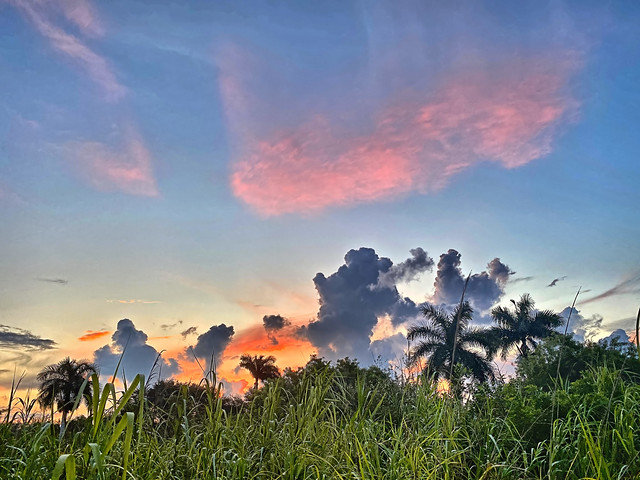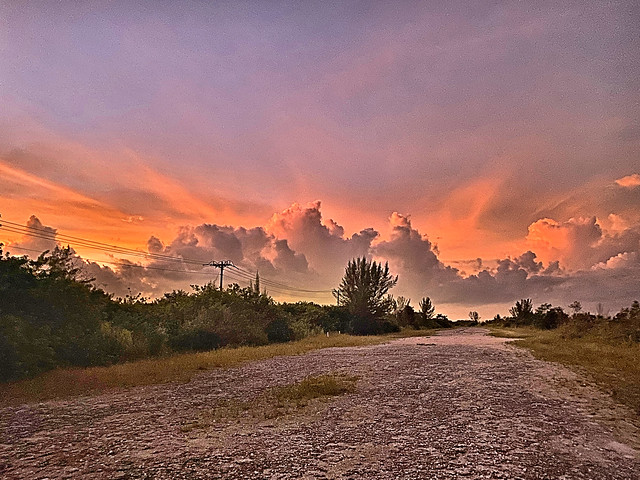During the summer months I sometimes struggle to attain my Minimum Daily Requirement (MDR) of 20 bird species in our local Wounded Wetlands. This is so much easier during spring and autumn migration.
This past week the highlights among the arriving birds have been--
Black-throated Blue Warbler, males...

Yellow-billed Cuckoo:
Yellow-throated Warbler:
Common Yellowthroat male...
...and female:
Ovenbird:
Red-eyed Vireo:
Yellow-throated Vireo:
Northern Parula warbler:
Scarlet Tanager male in winter plumage:
For comparison, here is a male in breeding plumage I photographed in Illinois (May, 2017)
American Redstart:
Gray Catbird:
Blue-gray Gnatcatcher:
Prairie Warbler:
This fruiting fig (Ficus species) along the Levee Trail attracts many warblers:
Crepuscular rays from the sun emerge from the "civilized" side of the canal, about 20 minutes before sunrise:
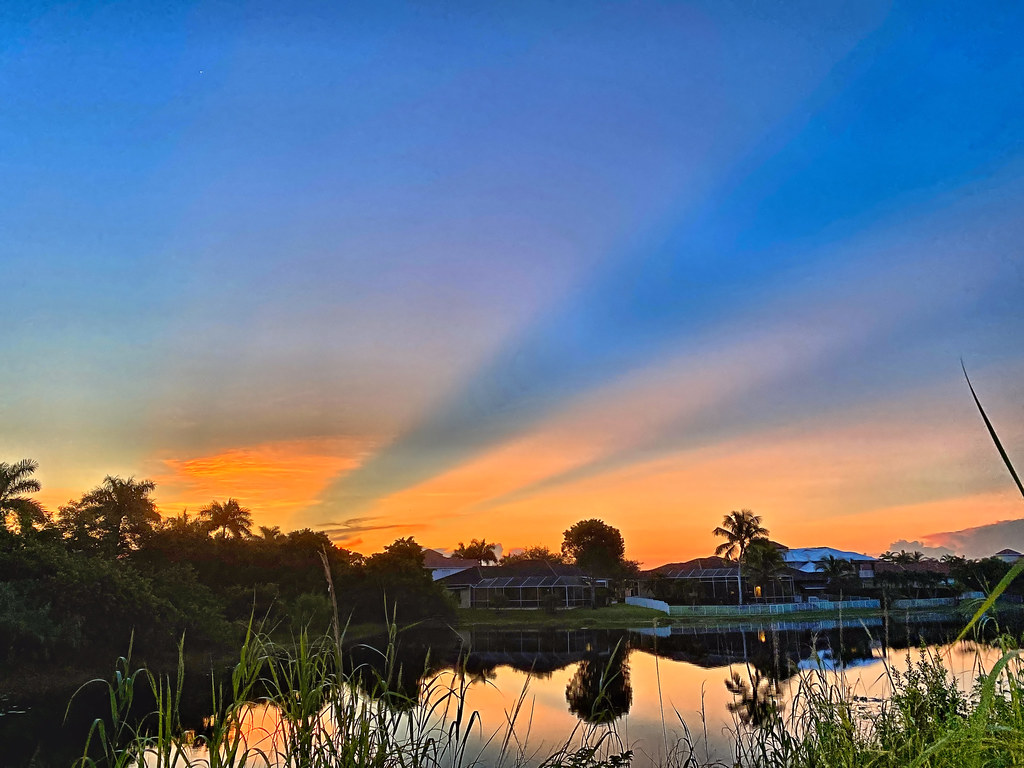
On the opposite (western) horizon, anticrepuscular rays converge over the Everglades preserve as distant Coyotes sing to celebrate a kill:
This was the Miami, Florida Doppler radar velocity image at 4:30 AM on October 13. Our home location is circled and the direction of the reflections from migrating birds is indicated by the arrows:

The image from Key West at the same time gives some idea of the density of southbound migrant birds passing over the Florida Keys:
= = = = = = = = = = = = = = =
Linking to:
Skywatch Friday
Weekend Reflections
Saturday's Critters
BirdD'Pot
Camera Critters
All Seasons
Wordless Wednesday (on Tuesday)
Natasha Musing
Our World Tuesday
Please visit the links to all these posts to see some excellent photos on display
________________________________________________

